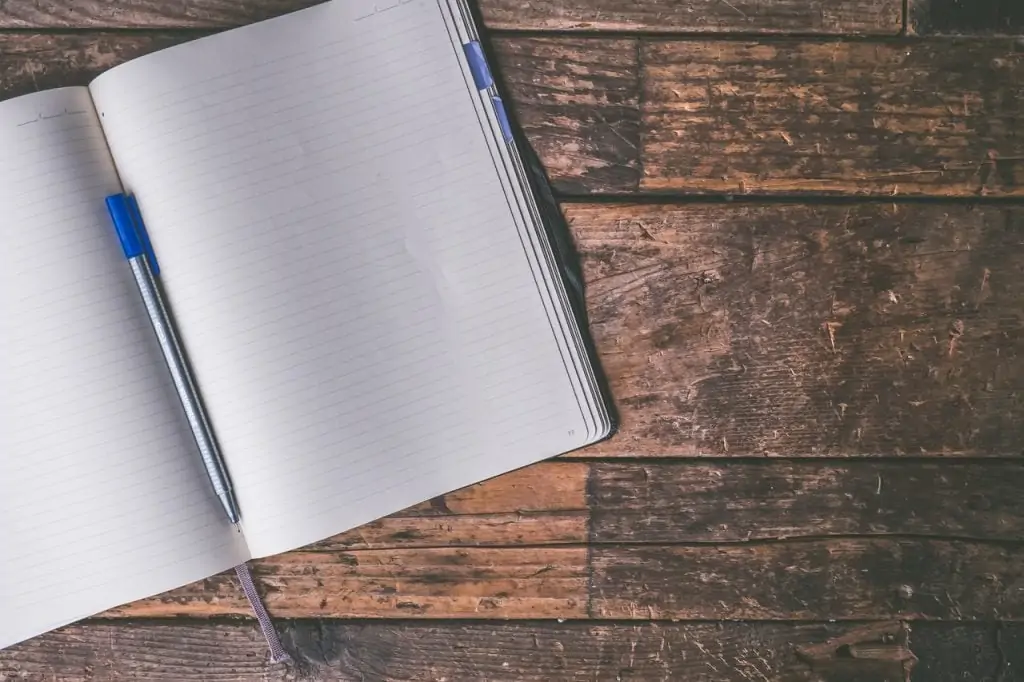So, you’ve been assigned a new essay by your teacher, and you’re trying to figure out just how to make it work, right? You want to make sure that you’re writing something high quality that is really going to get you a good grade, but you’re not really sure about the descriptive essay format. Well, that’s what we’re going to help you with throughout this guide.
We’re going to look at the different sections of a descriptive essay and just what a descriptive essay even is. That way, hopefully, by the time we get done here, you’re going to have no problem writing up that next descriptive essay for your teacher, no matter what the topic may be.
What is a Descriptive Essay?
Let’s start from the top, shall we? Just what is a descriptive essay? Well, it’s actually very much what it sounds. A descriptive essay is an essay that really describes something and helps a reader to feel like they know that topic inside and out along with you. In general, you’re going to be describing a person or a place or a thing in such exquisite detail that someone knows what it’s like from all five of their senses.
How to Write a Descriptive Essay
So, once you know what this type of essay is, how are you actually going to write one? Well, we’re going to start out with a few descriptive essay tips that you can use to get you started. It’s all about starting out right because once you’re able to do that, you’re going to have a much better experience of actually laying out the rest of the assignment.
Find the right topic. Just like with any essay, you need to start with a topic, but when you’re coming up with a descriptive essay, you’re going to need to ask yourself a few essential questions about your topic.
Do I know it well? You are going to need to describe your topic so well that your reader will feel like they know that person, place, or thing by the time you’re done. Make sure you know the topic that you’ve chosen well enough that you can accomplish that feat by the end of the essay.
Does it fit the prompt? If your teacher has asked you to describe a person that you most admire, then you need to make sure you’re writing about that person. If you’re not, it’s going to come across in your writing, and you could end up turning off your reader throughout the essay.
Organize your idea. The next step is going to be organizing your paper so that it flows well. In general, you want to ramp your way up to the most essential part of this type of essay. That means starting with more general aspects and then building into the most descriptive sections.
Create your thesis statement. Remember, in any essay that you write, you need to have a thesis statement, and that goes for a descriptive essay as well. In a descriptive essay, you’re going to create a thesis that defines just how the topic you’re writing about is related to the prompt. ‘My mother is the most influential person in my life because …’ ‘Atlanta is the most beautiful state because …’
Engage your senses. Before you even start writing list out each of your senses and define how you’re going to address them in your essay. How are you going to address smell? Or taste? Or sight? How does the topic that you’re writing about fit each of those senses?
How to Start a Descriptive Essay Introduction
Next, let’s start diving into the particulars of the essay that you’re going to be writing. We’re going to take a look at the introduction first because it’s the top of the essay, but it’s likely not going to be the first part that you write. Instead, you’re going to be better off starting with the body of your essay and coming back to this part. But let’s not get ahead of ourselves. Let’s get into how to write a descriptive essay introduction.
End with a thesis. Your thesis needs to explain what’s going to happen throughout the rest of the essay. You need to make sure that the reader knows what the point of the essay is and what your approach to it is. Define the two and make sure that you tie them together.
Draw the reader in. You need to make sure that you’re pulling the reader into your story and that they want to keep learning more. That’s where the introduction is so critical. If you don’t make them want to know more, they’re not going to continue reading (your teacher is because they have to, but they won’t want to).
Skip the details. This is not where you’re going to get into a lot of detail or painting a big picture. That’s what you’re going to do in the body of your essay. Here, you might make a single statement about your topic that paints an image, but only an outline. Then, you want to lead into the body where you’ll fill it in.
Question the reader. Asking a question is an excellent way to build up some suspense and get the reader thinking before they even start to read your essay. They’re going to be thinking about how that question plays into their own lives and how you’re going to approach it.
What to Include in the Body of a Descriptive Essay
The body of your essay is generally going to be the first part that you’re going to write because it’s going to be the part that you can research. It’s a little more fact-based (though with a descriptive essay, you are going to be using a lot of emotion-based information). You’re also just trying to back up the point. At this point, the person is already reading, so it’s a little easier to keep them there.
Make a point in each paragraph. You’re going to want each of your paragraphs to have a point to it. Each one is going to explain one more aspect of whatever it is you’re describing. But make sure that it’s only focused on one thing. Also, make sure that it’s fully describing that one thing.
Don’t forget transitions. You absolutely need to make sure that your paragraphs tie back in together. When you present one idea, make sure that it flows into the next one. If it does, you’re going to create a cohesive description and story. If it doesn’t, you’re going to confuse your reader, or you could end up turning them off to the writing.
Organize effectively. Make sure that your paragraphs make sense in the order you are presenting them in. If you’re going to talk about the way that the ocean smells during a storm, you don’t want to then switch to how it looks and back to how it smells during the calm. You want to keep all of the information where it makes sense.
Focus on the senses. We mentioned your senses above, but remember that you’re going to need to describe whatever it is that you’re talking about in a way that makes it easy to visualize. In order to do that, you’re going to need to engage all of the senses of your reader.
How to Write a Great Conclusion for a Descriptive Essay
The final thing anyone is going to see about your essay is the conclusion, which is why it’s so essential for you to write a good one. You want to make sure that you finish out strong so that you’re getting your point across. In a descriptive essay, you mostly want someone to be able to really picture what it is you described, but let’s dive a little further into how to write a descriptive essay conclusion.
Restate your thesis. As with any essay, you need to make sure that you restate the thesis statement that you used. This statement needs to tie your topic into the prompt that you were given and tie off any loose ends.
Reengage the reader. Remember to reengage the person who is reading your essay by bringing them back to whatever it was you described. You can mention the smell of their new dog after a bath or the sound of applause after that great speech or the look of a fresh snowfall.
Keep it short. You just want to touch on some of the critical points here; you don’t want to rehash anything. This is the place where you’re going to help your reader recognize that the story is over.
No new information. Don’t present anything new here. The idea is to remind the reader of some of the critical points and possibly to synthesize those together and form a conclusion. You don’t want to introduce anything new because then your reader is confused about whether you’re actually done.
How to Cite Sources for a Descriptive Essay
Generally, you’re not going to have sources when it comes to a descriptive essay. That’s because you’re primarily writing about things like your feelings and your opinions about something. You’re describing something that’s usually not too abstract or complicated (you’re not going to write a descriptive essay about quantum theory, for example). This means that you’re not going to need to back things up with sources.
If you absolutely have to use a source for something, make sure that you’re using the format that your teacher has requested. This could be MLA, APA, Chicago, Harvard, or any other style of citation. You’ll want to review the outline you’re provided to make sure you’re even allowed to use sources and how to reference them.
Other Descriptive Essay Tips and Best Practices
Okay, so now that we’ve delved a little further into each of the different sections of your essay, what else do you need to know? How can you make sure that you’re following the best practices and that you’re going to write something that fits the rules that your teacher has set? Well, when it comes to how to write a descriptive essay about a person or how to write a descriptive essay about a place, this is where to start.
Use your own mind. You’re not really going to need citations here, so make sure you’re drawing on your own thoughts, ideas, and memories to really make the piece come alive. You’re painting a picture, not creating a standard research piece.
What does your reader need to know? Remember, your reader doesn’t know your topic the way you do (or you have to assume that they don’t). That means you need to explain all of the things they would need to know in order to picture it and think of it the way you do.
Reread your essay. You should always reread your essay to make sure that it fits the prompt and that you’ve adequately described everything you wanted to. When you read the essay, can you visualize precisely what you described? If you can, then great. If you can’t, you’ll need some more edits.
Read it out loud. When you’ve been working on something for as long as you’ve probably been working on this essay, it’s completely normal to find yourself reading what you think is there and not what’s actually there. Reading out loud forces you to read only what’s on the page, and you might find mistakes you wouldn’t otherwise.
Show, don’t tell. Remember, you’re writing a description, which means you want to make sure that your reader can actually visualize what you’re writing about. If you tell them ‘the room was old,’ they really can’t imagine anything. If you describe the room and let them conclude that the room was old, you’re doing better.
Avoid formality. When you’re writing an essay for school, you usually need to keep it formal and professional. That’s not the case when you’re writing a descriptive essay. You want to avoid the formalities because that’s going to pull your reader out of the story. They’re going to be less likely to visualize if you don’t have a good flow.
Example Descriptive Essay Prompts and Topics
All right, we’re getting down to the end here, but maybe you’re still not sure what to write about. If you need a few descriptive essay topics, you’re going to want to take a look at each of these. They might help you find something that fits into the prompt that your teacher provides, or they might just work on their own. Make sure that you know the topic you’re writing about inside and out before you decide on anything.
1. What is a best friend?
2. What is the ocean?
3. What is home?
4. Who is Abraham Lincoln?
5. The Taj Mahal
3 Other Resources to Find Example Descriptive Essays
The final thing we’re going to leave you with is a few sources that you can check for descriptive essay examples. After all, you want to make sure that you’re doing things right, right? You want to make sure that you’re creating an essay that fits the rules that you’ve been given. So, these sources are going to make it a whole lot easier for you to do just that.
1. Examples.com. Here you’re going to find very little filler information. In fact, you’re pretty much only going to find a long list of expository essays that you can download and take a closer look at. That’s definitely going to make it easier for you to see what they tend to have in common and just how you could be making some improvements on your own essay writing.
2. Literary Devices. This website is going to offer you some examples of descriptive essays that have actually been used in different types of literature. That way, you’re getting a short and simple example that you can take a look at. You’ll also get a little bit more information about just what you need to do to create a high-quality descriptive essay. Overall, this is a relatively short and sweet option.
3. AcademicHelp.net. Here you’re going to get a whole bunch of different sample essays that you can look over. It’s going to give you the topic and the essay itself, which makes it easy to see how the individual defined that specific person, place, or thing. Plus, some of them are a little more abstract rather than straightforward, so you’ll get a little more different idea of how to approach this process.
Hopefully, this guide will serve as a way to get your essay written faster and better. You want to make sure that you’re following the right format, and that’s what we’ve discussed in this guide. By the end of your essay, your reader should be able to feel like they’re right there with the person or object that you’ve described or in the place. If you’ve managed to do that, then you’ve definitely succeeded in your objective.
Did you enjoy this post? Then you’ll love the other posts related to writing essays. Check them out below:
> How to Write Persuasive Essays



















